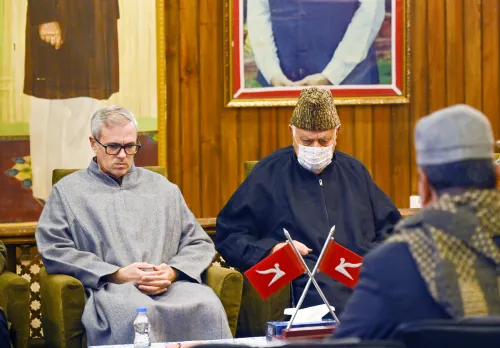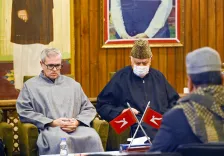How is the Sickle Cell Elimination Mission Addressing Genetic Disorders?

Synopsis
Key Takeaways
- NSCAEM aims for a Sickle Cell Disease-free India by 2047.
- Universal screening targets 7 crore individuals aged 0-40.
- Focus on marginalized communities, especially tribal areas.
- Over 6 crore screened, with significant disease identification.
- Low-cost screening technology enhances accessibility.
New Delhi, Aug 12 (NationPress) The National Sickle Cell Anaemia Elimination Mission (NSCAEM) is focused on addressing the genetic disorder to promote equity and dignity for those affected, according to a statement from the Prime Minister’s Office on Tuesday.
In a post shared on the social media platform X, the PMO praised a media article by Union Minister Jagat Prakash Nadda regarding NSCAEM, which aims for a Sickle Cell Disease-free India by 2047.
“From tackling a genetic disorder to ensuring equity and dignity, India’s National Sickle Cell Anaemia Elimination Mission heralds a new chapter in public health,” the PMO India posted on X.
Sickle Cell Disease is a chronic, single-gene disorder that results in a debilitating systemic syndrome characterized by chronic anaemia, acute painful episodes, organ infarction, and chronic organ damage, significantly reducing life expectancy.
This genetic blood disorder impacts the entire life of the patient, leading to various severe health complications.
“India's battle against sickle cell anaemia goes beyond simply addressing a genetic condition; it represents a commitment to equity, dignity, and the health of our nation's most marginalized communities,” Nadda stated on X.
Describing NSCAEM as a “landmark initiative,” the Union Health Minister highlighted that it aims not only “to halt the transmission of sickle cell disease but also to restore dignity and health to millions living with this condition.”
To combat the disease, the NSCAEM was inaugurated by Prime Minister Narendra Modi in July 2023.
The mission's objective is to eliminate sickle cell disease as a public health issue in India by 2047 through universal screening of 7 crore individuals aged 0-40 years in affected tribal areas by FY 2025-26.
“As India resolutely advances towards the 2047 goal of eradicating SCD, the NSCAEM stands as a beacon of hope, demonstrating the power of collaboration between the government, healthcare professionals, and communities for a shared purpose,” Nadda remarked.
Nadda’s article emphasized the government’s initiatives ranging from mass screening and early diagnosis to awareness campaigns and enhanced treatment access, particularly focusing on tribal communities most affected.
Earlier this month, Nadda informed Parliament that over 6 crore people have been screened for sickle cell anaemia in the country. Out of this, 2.16 lakh have been identified as having the disease. He noted that screenings under the mission were carried out in 17 states.
Meanwhile, the Indian Council of Medical Research (ICMR) shared on X how its low-cost Point-of-Contact device is facilitating broader screening for Sickle Cell patients.
“Validation of a low-cost PoC device for #SickleCellAnaemia screening has reduced the cost from Rs 100 to Rs 28, allowing for greater access in tribal areas. Proud to contribute to advancing India’s commitment to health equity,” the ICMR posted on X.









